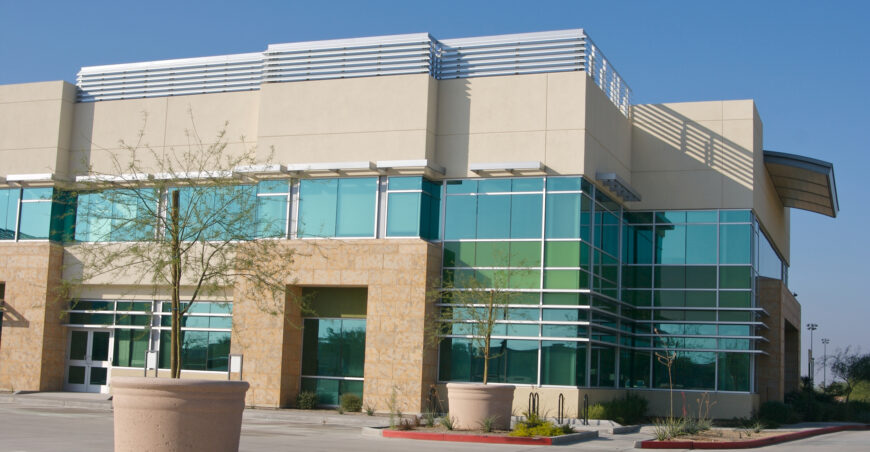In recent years, the commercial real estate landscape has experienced significant shifts between urban and suburban areas. This article delves into the evolving dynamics, examining the causes, current trends, and future implications for investors and businesses alike. Understanding these changes is crucial for investors looking to optimize their strategies in both areas.
Urban CRE
Historically, urban centers have been the epicenter of commercial activity, housing major corporations, retail giants, and service providers. The appeal was obvious: dense population centers meant a steady flow of customers and a dynamic business environment. However, urban CRE markets are undergoing several transformations:
Operational Costs: Urban CRE has always commanded premium pricing, higher taxes, and greater regulatory burdens which can deter businesses from either entering or expanding in these markets. However, as business operations become more flexible, companies are questioning the value proposition of expensive urban office spaces.
Quality of Life: With the rise in remote work, employees are prioritizing quality of life, often found in less congested, more affordable suburban environments.
Shift in Work Culture: The rise of remote and hybrid work models has decreased the dependency on central business districts, leading to a reevaluation of space requirements and office designs. Advances in technology have made it easier for people to work from anywhere, diminishing the necessity to be physically present in urban cores.
Suburban CRE
We all know that urban centers have been the heartbeat of commercial activity, drawing businesses and investors alike with their dense populations and robust infrastructure. However, the suburban real estate market has seen a resurgence in interest, a trend accelerated by the global pandemic and the subsequent increase in remote work. As more employees prefer to work from home at least part-time, the demand for suburban commercial spaces has grown. These areas offer several advantages, including lower property costs, more space, and the potential for a better quality of life, which attracts a diverse workforce. The appeal of Suburban areas is usually driven by several factors:
Cost-Effectiveness: Generally, suburban areas offer more affordable land and lower costs of development and maintenance, which is attractive for both startups and established companies looking to maximize their budgets.
Expansion Opportunities: With more available land and fewer zoning restrictions, suburban markets provide ample opportunities for large-scale developments and campus-style office parks.
Changing Lifestyle Preferences: The migration of populations towards suburbs, driven by the desire for more space and a better quality of life, has created a need for localized commercial hubs, enhancing opportunities in retail, entertainment, and office sectors.
The Resilience of Urban CRE Centers
Despite these trends, urban centers are far from obsolete. Cities are adapting to new realities through revitalization efforts and by redefining their value propositions to businesses and residents:
Infrastructure Improvements: Many cities are investing in infrastructure and public spaces to enhance livability and attract both residents and businesses.
Incentives for Businesses: Urban centers are offering incentives to attract startups and tech companies that can bring innovation and jobs.
Focus on Sustainability: Urban developments are increasingly focused on sustainability, which is not only appealing to a new demographic but is also becoming a regulatory requirement.
What This Means for Investors
For investors, the key is flexibility and foresight. Suburban markets offer potential high returns on investment due to lower initial costs and growing demand. However, urban areas still promise significant growth, especially in sectors like technology and healthcare, which continue to prefer urban settings for their operations. Investing in properties that offer easy conversion between different types of commercial use can be particularly lucrative. Additionally, considering properties that cater to the health and wellbeing of tenants may also provide a competitive edge. For CRE investors and developers, these shifts suggest several strategic considerations:
Portfolio Diversification: Investing in a mix of urban and suburban properties can hedge against market volatility and capitalize on growth trends across different regions.
Adaptive Use Properties: Properties designed with flexible uses can accommodate shifting business needs and market conditions, making them more resilient investments.
Focus on Amenities and Accessibility: Suburban developments that offer a blend of amenities, such as mixed-use developments with retail, residential, and office spaces, aligned with good connectivity to urban cores, are likely to attract tenants and consumers.
The shifting dynamics between urban and suburban commercial real estate markets represent a response to broader changes in work, lifestyle, and technology. For investors and business leaders in commercial real estate, staying ahead means being adaptable, forward-thinking, and responsive to these evolving trends. By understanding these trends and adapting investment and development strategies accordingly, CRE stakeholders can effectively navigate this evolving landscape. Keeping abreast of these changes is crucial for making informed decisions and maximizing the potential of both suburban and urban CRE investments. Whether it’s capitalizing on the growing demand for suburban spaces or reinventing urban locales to make them more appealing, the successful navigation of these shifts will require a keen understanding of both market conditions and human behavior trends.
If you are interested in learning more about the Arizona commercial real estate market in Arizona, feel free to reach out to us at ICRE Investment Team anytime. We’d be happy to help supply you with information on any relevant properties or markets, alongside any connections in lending, investing, brokerage service or consulting that you might need!
















